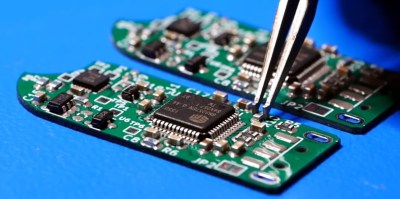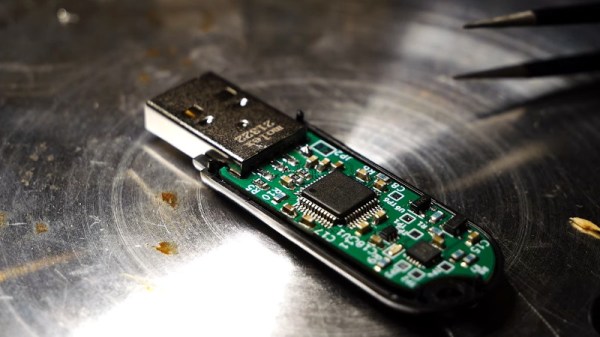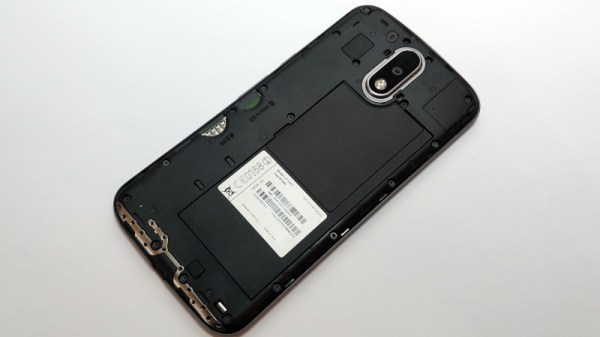Looks like it’s lights out on Mars for the InSight lander. The solar-powered lander’s last selfie, sent back in April, showed a thick layer of dust covering everything, including the large circular solar panels needed to power the craft. At the time, NASA warned that InSight would probably give up the ghost sometime before the end of the year, and it looks like InSight is sticking to that schedule. InSight sent back what might be its last picture recently, showing the SEIS seismic package deployed on the regolith alongside the failed HP3 “mole” experiment, which failed to burrow into the soil as planned. But one bad experiment does not a failed mission make — it was wildly successful at most everything it was sent there to do, including documenting the largest marsquake ever recorded. As it usually does, NASA has anthropomorphized InSight with bittersweet sentiments like “Don’t cry, I had a good life,” and we’re not quite sure how we feel about that. On the one hand, it kind of trivializes the engineering and scientific accomplishments of the mission, but then again, it seems to engage the public, so in the final rinse, it’s probably mostly harmless.
Not Can It Run DOOM, But Can DOOM Run It?
It’s the standard test for a hardware hack, half serious half in jest, “Can it run DOOM?”. The iconic early-90s shooter from id software has made an appearance on everything from toothbrushes to LEGO bricks, but nobody has yet posed the opposite question: Can DOOM run it?“. It’s one answered by [Danny Spencer], who has proved that it’s possible to perform computational tasks in the game by producing a working adding machine in a DOOM level.
If you’re familiar with the folks who build working computers within Minecraft, this is in a similar vein. Game elements are used to create logic elements, and from there more complex systems can be assembled. DOOM doesn’t have the in-game logic that Minecraft has, but by clever combination of monster behaviour with in-game actions involving rooms, buttons, and doors, it’s possible to create the simplest of building blocks, the NAND gate.
The video below the break shows the adder in action, first in operation (we like the monster-driven display!), and then a tour of the logic area with its rooms full of computational monsters. It’s important to note that this isn’t a computer, he hasn’t proved it as Turing complete, and that the maximum size of a DOOM level whatever it is will impose an upper limit on what can be done. But it does show that in theory at least a computer can be made in DOOM, and we’re sure people will continue this work.
Continue reading “Not Can It Run DOOM, But Can DOOM Run It?”
Self-Propelled Chainsaw Reduces Injuries
[Advoko] is an expert at milling logs into various sizes of boards. He typically uses nothing but a chainsaw to enable him to mill on-site without needing to bring any large or expensive equipment. The only problem is that sometimes he gets a little carried away running his mill non-stop until he has enough lumber for whatever project he is building, which has led to some repetitive strain injuries. To enable him to continue to run his mill, he’s created this self-propelled chainsaw jig.
The creation of the self-propelled chainsaw was a little serendipitous. [Advoko] needed to mill a tree which had fallen on a slope, and he couldn’t move the large trunk before starting to mill. To avoid fatigue while pulling his chainsaw upwards, he devised a system of rubber belts that would help pull the weight of the chainsaw up the hill. Noticing that if the chainsaw could have been operated downhill, it would essentially pull itself along the cut, he set about building a carriage for the mill to hold the chainsaw in place while it semi-autonomously milled lumber for him.
The chainsaw jig isn’t fully autonomous; [Advoko] still needs to start and stop the chainsaw and set up the jig. It does have a number of safety features to prevent damage to the jig, the chainsaw, and himself too, and over a number of iterations of this device he has perfected it to the point where he can start it on a cut and then do other tasks such as move boards or set up other logs for cutting while it is running, saving him both time and reducing his risk of other repetitive strain injuries. If you don’t fully trust the automatic chainsaw jig, take a look at this one which requires a little more human effort but still significantly reduces the strain of milling a large log.
Virtualizing IPhoneOS 1.0
Virtualizing computers is nothing new. However, Apple devices always present challenges. Just ask anyone who has built a Hackintosh. At least computer hardware is usually exposed, but on phones, the challenge is even harder due to mysterious devices. [Martijn] managed to reverse engineer the iPod Touch 1G enough to run iPhoneOS 1.0 on it and has several blog posts explaining how he did it.
The emulator is the ubiquitous QEMU. He has emulation for the critical hardware, including the cryptographic modules, the hardware clock, and the timer, along with memory and display and interface hardware. However, Wifi, some USB, audio, the light sensor, and some graphics hardware are still absent. That doesn’t stop the OS from booting, however.
Encoding NTSC With Your Hands Tied
Generally, when trying to implement some protocol, you are constrained by your hardware and time. But for someone like [EMMIR], that’s not enough. For example, NTSC-CRT is a video signal encoding/decoding simulator with no hardware acceleration, floating point math, or third-party libraries. Just basic C.
While NTSC has officially gone dark in America, people still make their own ATTiny-powered transmitters. NTSC is a bit of a strange standard and is sometimes referred to as never-twice-the-same color, but it does produce a distinct look.
That look is what [EMMIR] was going for. It encodes a message in a ppm format into NTSC and then back in ppm with some configurable noise. It can do this in real-time as an effect in [EMMIR’s] engine or on a rendered image via a CLI. It looks incredible, and there’s something very satisfying. There’s a video after the break showing off the effect. The code is pretty short and easy to read.
The Spit-Detecting USB Flash Drive Is Nearly Here
Regular readers may recall that security researcher and general open source hardware fanatic [Walker] has been planning a rather unusual flash drive for some time — one that will only show its contents if the user makes sure to lick their fingers before plugging it in. We’re pleased to report that theory has recently given way to real hardware, and the Ovrdrive “self-destructing” flash drive is now a step closer to reality.
The last time we checked in with [Walker], he hadn’t yet put any hardware together, though he was fairly sure what components he would need and how it would all go together. This was assisted somewhat by the fact that USB flash drives are such a ubiquitous piece of tech, making their principle parts plentiful and fairly well documented. As explained in the video below, all you really need to spin up your own flash drive is the USB connector, the controller chip, and a nice slab of flash memory for it to access. Though naturally you’re on your own for spit detection.

What we especially like about this project is that [Walker] is releasing the whole thing as open source hardware. So even if you’re not interested in the whole lick-for-access feature, you’ve still got a boilerplate flash drive design to build on. We haven’t seen a lot of DIY projects tackle USB Mass Storage previously, and perhaps this design can change that.
But of course, only if the thing works. According to the video after the break, [Walker] seems to have hit a snag with this revision of the hardware. While it enumerates as a storage device when plugged into the computer, the operating system claims its capacity is zero. He thinks there might be a swapped trace between the controller and flash chip to blame, so hopefully he can get things sorted out before too long. We’ve been covering this project since the summer, and are eager to see it cross the finish line.
Continue reading “The Spit-Detecting USB Flash Drive Is Nearly Here”
Non-Replaceable Battery? Not If This Proposed EU Law Passes!
A disturbing trend in consumer electronics has been a steady disappearance of replaceable batteries on our devices. Finding a mobile phone with a swapable battery is a struggle, and many other devices follow the trend by sealing in a Li-Po cell. The result is an ever-shorter life for electronics, and a greater problem with devices going to recycling or worse still, landfill. Hope is at hand though, thanks to a proposed European Union law that would if passed make batteries in appliances “designed so that consumers can easily remove and replace them themselves“.
In case any readers in the rest of the world wonder what it has to do with them, the EU represents such a huge market that manufacturers can neither ignore it, nor in most cases afford to make separate EU and rest-of-world versions of their products. Thus if the EU requires something for sale in its territories, in most cases it becomes the de facto norm for anything designed to be sold worldwide. We’ve already seen this with the EU’s right to repair legislation, and while we have not doubt that manufacturers will do their best to impede this new law we don’t think they will ultimately prevail.
Via 9to5Mac.

















